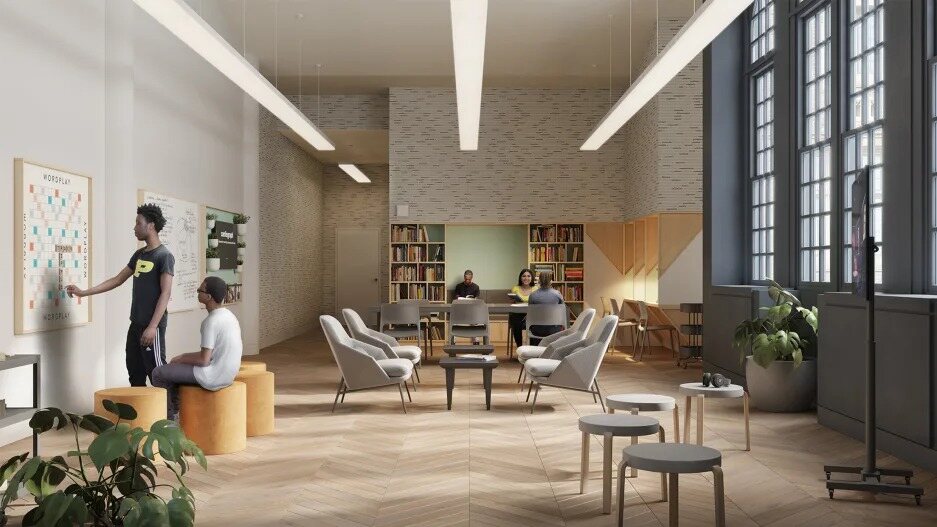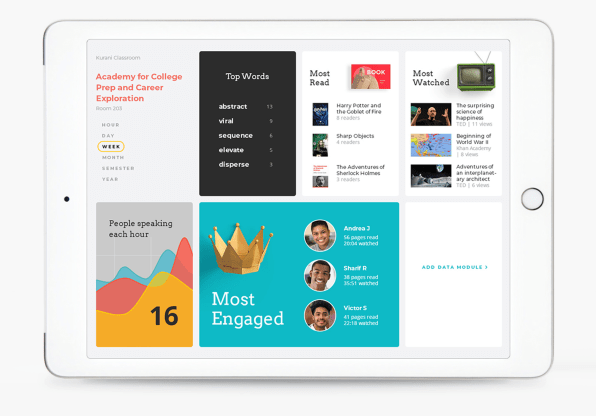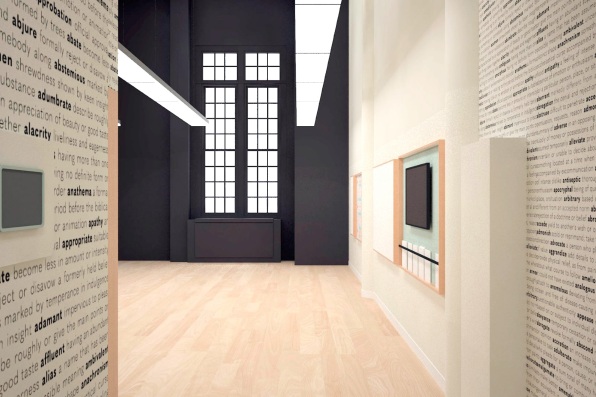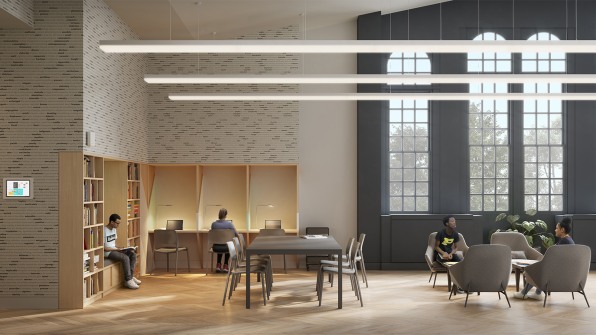- | 8:00 am
This sensor-filled ‘smart’ classroom is designed to improve literacy
Are sensors in the classroom bringing Big Brother to education or are they a helpful tool to improve literacy?

In a world of smart everything—phones, watches, and even walking canes—it was only a matter of time before “smart classrooms” entered the picture.

In Brooklyn, the Academy for College Preparation & Career Exploration recently unveiled a “Literacy Lounge” for its 6th-12th-grade students. The room features what you might expect from a space with that name: a small library, soft seating for reading, and study carrels for focused work. It includes what you might not expect as well: two sensors mounted on either end wall of the classroom plus a tablet dashboard, also mounted on a wall.

The sensors can track how often students speak, the quality of their conversations and the words they use, as well as how many different students speak during a class. Notably, the sensors can’t identify specific students, just the number of voices it hears, which helps protect student privacy. “It’s like a fitness tracker for your classroom,” says Danish Kurani, who runs his own architecture practice, Kurani, and who designed the Literacy Lounge (he actually calls it the “sensing classroom”).

The school partnered with Kurani because, five years ago, it identified a literacy problem among its students, many of whom speak English as a second language. This prompted the school to start monitoring student progress through targeted activities and assessments every six weeks. “That moved the needle,” says Joan Mosely, the school’s principal. “But imagine if we could monitor student progress daily and use that data to make informed decisions about how to teach them better.”
With Kurani’s technology, the school is hoping that real-time literacy data will help them take things to the next level. “Right now, educators usually receive information about how their students are doing too late to make a real impact,” says Mosely. “It’s like trying to perform an autopsy on a lesson after it’s already over.”
At first glance, the idea of a Big Brother-type classroom where students’ every word is being record can seem controversial, even frightening, but the concept isn’t without precedent. In 2019, for example, Carnegie Mellon University developed a system that can track things like students’ posture (a telltale of their engagement) or how long instructors wait before calling on a student. The system, called EduSense, has since been trialed across 45 classrooms in 3 universities.

According to Andreas Schleicher, a researcher who is currently the director for education and skills at the Paris-based Organisation for Economic Co-operation and Development (OECD), technology—if deployed thoughtfully—has the potential to help teachers be more attuned to their students’ needs. “The key, for me, is that the teachers are not the slaves of those algorithms, but are the designers,” he says.
Kurani developed the technology alongside the school, so the teachers were indeed the designers of the Literacy Lounge. Before installing the sensors in the school, Kurani and a computer scientist for Wesleyan University tested a prototype at the university’s computer science lab for more than a month, in order to confirm that the technology could properly capture, identify, and transcribe various voices.

For Kurani, the sensors can be seen as yet another teaching tool that can bring educators a newfound level of awareness about their students, the impact of their teaching style, or even the students’ interest in the curriculum. For example, the sensors might help a teacher realize that only two or three students are speaking up in any given hour, which could suggest that others are not comfortable speaking or possibly not engaged.
There are several reasons why this might be the case, from a poor layout that doesn’t encourage discussion to a curriculum that feels dull or irrelevant. Regardless, the goal is to enable “a moment of self-reflection,” says Kurani, who himself has taught at both Harvard and Stanford. “Maybe I’m lecturing too much; maybe I’m not setting up the conditions for us to have discussion-based learning; maybe I’m the sage on the stage, preaching and lecturing, and it doesn’t make for engaged learners.”
If this sounds like a lot of “maybes,” that’s because teaching is inherently full of uncertainties. “When you’re in the moment, you’re not counting how many kids spoke up,” says Kurani. “It’s tough, you’re managing the classroom, you’re delivering content, you’re facilitating, you’re trying to inspire, you’re doing so many things so it is hard to keep track.” With the help of technology, those “maybes” could turn into something a little more defined.

It’s important to note that the sensors are just one part of a more holistic classroom design, where every element is intended to work together to improve literacy. The classroom includes a library of books and magazines that the students curated, alongside language-focused games like Scrabble. At the entrance, the room features custom-designed wallpaper that can passively help students learn new words. “If you surround the kids with the right environment, if you surround them with language, the hope is that maybe every time they go in and out, maybe one new word catches their eye,” says Kurani.
Ultimately, the idea is that technology can give teachers more insight into themselves and their students, which in turn, can help pave the way for a more flexible teaching environment. “The kind of prescriptive classroom environments we normally have are not very effective; they are downgrading students to consumers and teachers to service providers,” says Schleicher from OECD. “I honestly think the future teacher needs to be not only a great instructor and a great coach and a great mentor, but also a good data scientist. You need to understand those streams of knowledge to be effective.”







































